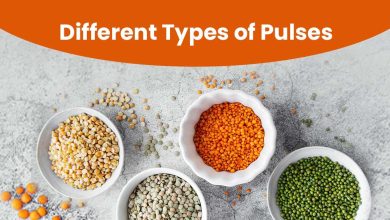
Dinosaur, also known as Niger lizard or Niger reptile, was a species of dinosaur that lived during the early Cretaceous period, between 121 million years ago and 99 million years ago 500 teeth,
More than 500 teeth and a purely herbivorous diet set this unusual Dinosaur apart from others. The herbivorous sauropod Dinosaur belonged to the genus Sauropoda, which included other huge herbivores. Brachiosaurus and Diplodocus are two other known sauropods.
Compared to the African elephant, this sauropod is estimated to have been 15 to 30 feet long and weighs 4 to 5 tons.
Many postcranial bones have been found in Niger, Algeria, and Tunisia, where the dinosaurs are said to have originated. Human remains were found in the region of Gadufaua in the central part of Niger, in the Elraz formation.
Dinosaur fossils are said to have been discovered in 1976, but it wasn’t until 1999 that the species was officially named. Dinosaur taqueria, named after the French paleontologist Philippe Taquet, who was the first to discover sauropod remains, is thought to be the only species in the genus.
Distinctive characteristics
Paul Sereno, a paleontologist, named Dinosaur the Mesozoic cow. The weirdest Dinosaur I’ve ever seen, Sereno, has been quoted as saying about this sauropod.
Dinosaur teeth
A distinctive feature of Dinosaurs was more than 500 teeth. It is said that in what is now the Sahara Desert, this unusual herbivore grazed for food. It ate by snatching food from the air with its long muzzle-like snout. Paul Sereno, a paleontologist, also said that the face of the Dinosaur resembled that of a vacuum cleaner.
The reconstructed skeletons show that Sereno’s mouth closely resembles the end of a vacuum cleaner, proving that Sereno’s comparison of a vacuum cleaner was correct.
The broad snout, with four large side windows or openings in the skull and thin bones, proved to be a specialized feeding tool. More than 500 teeth adorned its wide muzzle, and new ones grew at one tooth every fourteen days.
When it came to Dinosaur’s jaw, teeth, and mouth, things weren’t quite the same as usual. It is the only quadruped whose jaws are wider than the skull in terms of the jaw structure. Along with this, it is the only tetrapod that has managed to examine the teeth that emerge laterally through the anterior part of the mouth.
visit here for more info about WPC2026
For a sauropod dinosaur, this creature had an unusual tooth structure. Dinosaur, a never-before-seen sauropod, has been found to have a unique feature: tooth batteries. Triceratops and other similar beaked herbivores, like Triceratops, had dental batteries, but sauropods did not.
Herbivores used dental batteries because of their high processing efficiency. While the tooth in the column wore out, it was replaced by the one behind it, which, according to legend, took the place of the old tooth. Like a pea pod, the columns of teeth would be pressed tightly against each other. There are many ways a dinosaur’s mouth could contain hundreds of teeth, both old and new.
The upper jaw of the Dinosaur contained about 60 rows of small needle-like teeth. On the other hand, the lower jaw had about 68 columns. If all columns are taken into account, Dinosaur had nine sets of interchangeable teeth in its jaw.
The teeth of dinosaurs are also unique due to their orientation. It makes no sense to have teeth that protrude to the sides to chew on leaves hanging from trees. Dinosaur feeding and grazing on the ground is supported by evidence. This is how the Mesozoic cow got its start. Foraging among low-growth plants, the broad muzzle makes an ideal companion. A dinosaur could gnaw its way through vegetation thanks to its many teeth. For Dinosaur, tooth batteries would have been necessary because each new tooth was replaced every fourteen days.
The size of a dinosaur
As a member of the sauropod family, the Dinosaur was the largest known Dinosaur. According to other sauropods, the Dinosaur was a much smaller creature. Diplodocus averaged 85 feet in length, while Dinosaur was estimated to be around 30 feet in length. On the other hand, they say that the Diplodocus weighed as much as a modern African elephant (about 4-5 tons). Because of this, we can classify the Dinosaur as a medium-sized dinosaur. The dinosaur also had a shorter neck than other members of its family, making it a smaller relative.
Dinosaur Facts – Top 5 Facts
A dinosaur is described as a dinosaur with a short and long neck. Long necks are the main distinguishing feature of the sauropod family. This is six times longer than the world’s longest giraffe neck, which is 15 meters long. However, this is not the case for Dinosaur and their closest relatives (Rebbachisauridae). Rebbachisaurids in the vast majority of cases had a neck length of fewer than 10 meters.
- “Nigerian lizard”
Dinosaur is known as “Niger lizard” or “Niger reptile” in English translation. Mainly due to the discovery of his remains in what is now Niger.
- Discovery of baby Dinosaur
Dinosaur fossils were discovered by paleontologist Paul Sereno during an expedition. The upper jaw of a baby Dinosaur has been described as fitting on top of a silver dollar, despite the fact that fully grown specimens can reach 30 feet in length.
- Only plants
Dinosaur belongs to the sauropod family. Sauropods were any of the sauropod dinosaurs. Size, neck and tail, quadrupedal build, and herbivorous diet were some of their most distinctive features (plant eaters).
- Posture Debate
Scholars debate whether the Dinosaur stooped or stood upright. When these creatures were first discovered, some scientists thought they would be able to keep their skills at a constant 67-degree angle, making it easier for them to find food. It has been argued that dinosaur vertebrae allowed for a much greater range of motion than previously thought. Thus, Dinosaur would behave more like other sauropods, with its neck turned up.
Which Dinosaur has the most teeth?
Despite its impressive number of teeth, Dinosaur failed to set a new record. It was rumored that hadrosaurs had 1,400 teeth in their mouths. Among living creatures, their teeth were considered the most complex of all time.
Here it is, a dinosaur with 500 teeth. This is a Dinosaur. Even though it doesn’t have the most impressive skeleton among dinosaurs, this strange and unusual sauropod is sure to grab people’s attention. With so many teeth at their disposal, what else can you expect?
What Dinosaur Has 500 Teeth? It was an interesting read. Tell us one of your favorite Dinosaur facts. Let us know if you have any questions! Follow our Techstry website for more facts and figures.
Did he have 500 teeth?
Well, that was technical. The Dinosaur had a skull with 500 fine teeth. Nut, all those teeth weren’t permanent. In total, Dinosaur had 500 teeth, consisting of permanent and replaceable teeth!
What did this Dinosaur with 500 teeth look like?
In short, Dinosaur is similar to sauropods. It used to have a smaller head with shorter hind legs and tail like any other dinosaur. It was only 9 m tall with a 1 m femur. According to paleontologists, they must have weighed 4 tons. Therefore, Dinosaur could have had the same height and weight as a modern elephant. Due to the structure of the body, it has a short neck, with only thirteen cervical vertebrae.
Dinosaur’s Skull
The Dinosaur has four openings in its skull, called the Fenestra, which is more significant than other dinosaurs with longer necks. But the skull was strong enough to resist shearing 500 teeth. He also had bony and elongated nostrils.
Their snouts were shorter. But interestingly, Dinosaur had a shorter snout. Their dentition was not prognathous, and the tip of their snot was in proportion to the dentition. Another distinguishing feature of Dinosaurs was that their elongated skull disappeared with a noticeable indentation in the brain region. In addition, their upper tooth also rotated with the identical rotation of the lower jaw. This unique trait allowed their mouth to accommodate all 500 teeth throughout their mouth.
Their teeth were perfectly adapted to their carnivorous attitude. The lower teeth were 20-30% smaller than the teeth of the upper jaw. In addition, the teeth had curved crowns and asymmetrical enamel (thicker on the outside). This allowed them to lift plants from ground level.
Body Of Dinosaur
Paul Sereno described this Dinosaur as an ancient crocodile. He had armor plates placed on his back by 1 foot. His vertebral arches are heavily pierced with interesting thick plates between the pneumatic holes. The vertebrae of his tail had no hard centers. His pelvic and sternum bones were only a few millimeters thick. Like any other sauropod or elongated Dinosaur, it also had strong limbs. The forelimbs may have been two-thirds of the hind legs, a hallmark of Diplodocus.
Classification of dinosaurs with 500 teeth
Take first included Dinosaur in Dicreosaurus. But Sereno reclassified it as a diplodocoid rebbachisaurid. According to him, he also had a shorter neck, and this was a feature of the diplodocoid rebbachisaurids.
Here is its scientific classification
- Kingdom: Animalia
- Type: chordates
- Claude: Dinosaur
- Clade: Lizards
- Klada: Zauropodomorpha
- Clade: sauropods
- Superfamily: Diplodocoidea
- Family: Rebbachisauridae
- Subfamily: Rebecca Suriname
- Genus: nigerzavr
- Species: Dinosaur Taketa
What did it eat?
The dinosaur was originally thought to be a herbivore. But it is believed that this is a herbivore, like any other sauropod. Has slight parallel pitted teeth scratches? This often occurs with herbivores that feed on ground flora such as ferns, weeds, etc. Grass did not develop during this period. Therefore, this Dinosaur with 500 teeth fed on horsetails, angiosperms, ferns, etc. But they did not feed on cycads, aquatic vegetation, or conifers due to their stiff neck and stature.
They can be compared to modern flamingos. Dinosaurs may have used their 500 teeth like a comb to filter out aquatic ferns and other plants while eating, like these pink birds. But, according to Sereno, dinosaurs could also feed on low-growing conifers and other land plants.
Due to the lateral orientation of the teeth, he could not chew plants well. This, in turn, caused rapid decay of their teeth. Hence, they needed this massive amount of 500 teeth to ensure that a new and functioning tooth would replace the diseased teeth. Their teeth change rate is faster than any other herbivorous dinosaur!
Where did it live?
The dinosaur lived in the Elhaz Formation of the Tenma Group, located at Gadufaua in the Republic of Niger. The area contains fluvial sandstones with low relief and occasional dunes with large to medium grains. But this place was a floodplain in the Cretaceous period. The swamps gave him enough food from the ground flora to keep him going.
Conclusion
So, if you check, Dinosaur is a simple, harmless dinosaur that probably lived 115 million years ago. Scientists need to learn more about this Dinosaur in order to understand it better!




